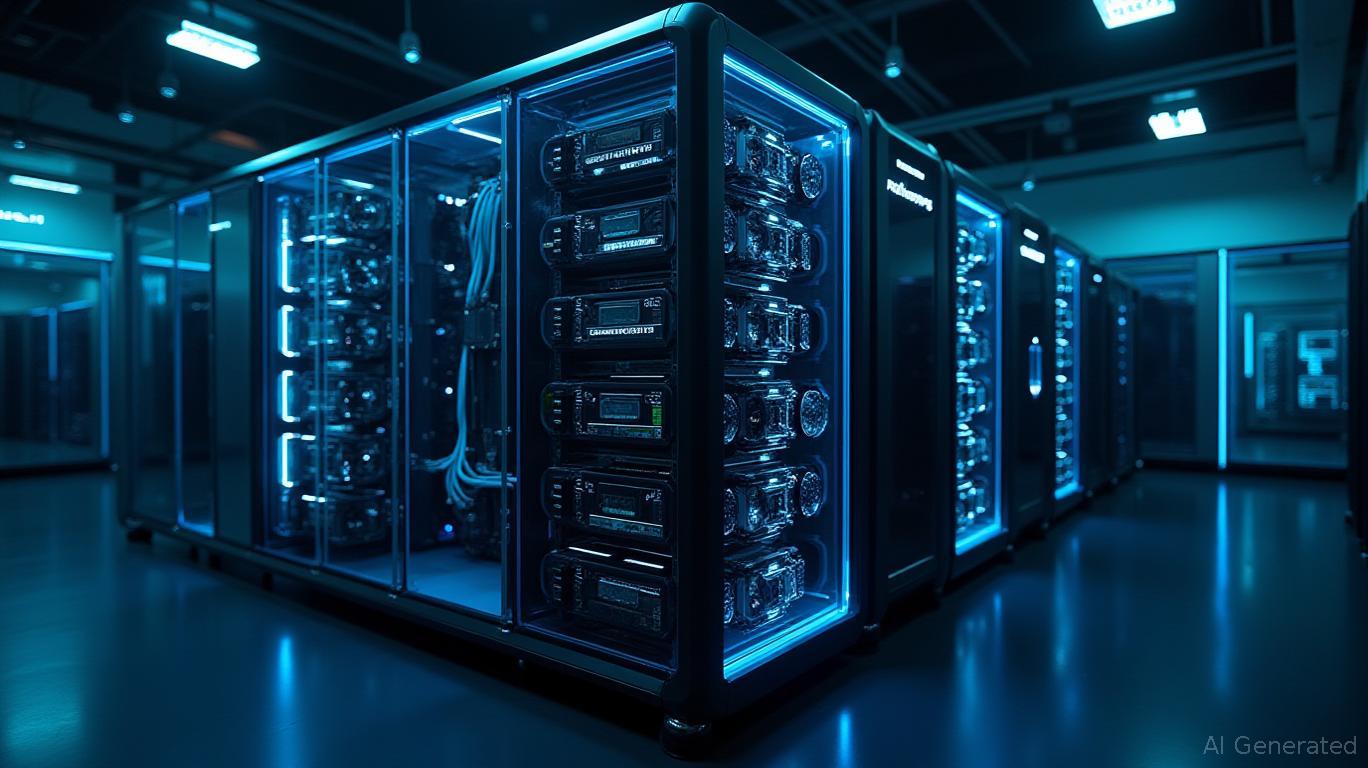NVIDIA's AI Supercomputing Dominance: A Moat Built on Silicon and Synergy
The race to dominate AI infrastructure is no longer about incremental gains—it's about building systems that are fundamentally unassailable. NVIDIA's Vera Rubin architecture and its partnership with the Blue Lion supercomputer project exemplify how the company is engineering a compounding advantage in high-performance computing (HPC) and AI, positioning itself as the indispensable backbone of tomorrow's digital economy.

Technical Differentiation: The Vera Rubin Advantage
NVIDIA's Vera Rubin architecture is a masterclass in synergistic design. By tightly integrating its custom Vera CPUs (3nm, fully proprietary cores) with Rubin GPUs (50 PFLOPs of FP4 compute), the system achieves a level of performance and scalability that AMD's Instinct or Intel's Ponte Vecchio cannot match. The Rubin GPU's 288GB HBM4 memory and NVLink 6.0's 3.6TB/s bandwidth create a memory hierarchy that rivals even theoretical limits, while the Kyber rack's 144-GPU package density (scalable to 1,152 GPUs) ensures it can handle everything from climate modeling to generative AI training.
AMD and Intel, constrained by legacy architectures and reliance on third-party CPU designs, are playing catch-up. NVIDIA's vertical integration—spanning silicon, software (Dynamo engine, NCCL libraries), and rack-level systems—creates a moat so wide that competitors may never breach it.
Market Capture: Institutional Lock-In Across Continents
The Blue Lion supercomputer, a €250 million collaboration between
, HPE, and Germany's Leibniz Supercomputing Center (LRZ), is a case study in strategic brilliance. By securing a flagship system for Europe's most advanced climate research and AI workloads, NVIDIA ensures recurring revenue streams from chip upgrades, software subscriptions (e.g., Earth-2's “Climate in a Bottle” models), and support contracts.European governments and institutions are doubling down on AI-native supercomputing, with Blue Lion's 7 exaflops (FP32) capacity and 4,400 Rubin GPUs setting a precedent. The U.S., meanwhile, is accelerating its own investments, with the Department of Energy's Aurora supercomputer (also NVIDIA-powered) hinting at a global shift toward GPU-centric HPC. This demand is structural, not cyclical: climate modeling, drug discovery, and AI-driven 6G research require infrastructure that only NVIDIA's stack can deliver.
Sustainability: Liquid-Cooled Efficiency as a Competitive Weapon
NVIDIA's partnership with HPE on Blue Lion's 100% direct liquid cooling isn't just a greenwashing ploy—it's a profitability play. By repurposing waste heat to warm buildings and slashing energy bills by 12%, NVIDIA's systems become the only viable option for energy-conscious institutions. Competitors lacking such innovations will face higher total cost of ownership (TCO), pricing themselves out of the market.
The math is stark: a 10% reduction in TCO for NVIDIA's clients translates to billions in avoided costs over a system's lifecycle. This isn't just about saving the planet—it's about saving money, a pitch that resonates with CFOs and climate-conscious boards alike.
Moats Widening: NVIDIA's Embedded AI Models
NVIDIA's “Climate in a Bottle” model, optimized for Rubin's systolic arrays and Vera's LPDDR5x memory, is a Trojan horse. By embedding its AI frameworks into workflows—whether training climate models or simulating molecular interactions—NVIDIA ensures that clients cannot easily switch to AMD or Intel without rewriting their entire software stack. The switching costs here are astronomical, and institutions will pay a premium for NVIDIA's ecosystem to avoid the risk.
Investment Thesis: A Core Holding in the AI Infrastructure Play
NVIDIA's combination of technical superiority, institutional lock-in, and sustainability leadership creates a virtuous cycle: more data center wins → more software subscriptions → more R&D to widen the moat → higher margins. With Blue Lion and Vera Rubin setting new benchmarks, NVIDIA is now a “must-have” for any enterprise serious about AI.
For investors, NVIDIA is no longer just a GPU company—it's the Microsoft of AI infrastructure. While near-term volatility is inevitable, the long-term trajectory is clear. Institutions, governments, and corporations are all doubling down on AI, and NVIDIA is the only vendor that can deliver the scale, efficiency, and software cohesion required. Buy the dips, and hold for the paradigm shift.
The future belongs to those who control the digital tools of innovation—and right now, NVIDIA is the only company with a seat at every table.

Comments
No comments yet